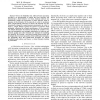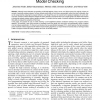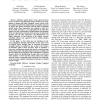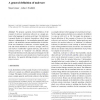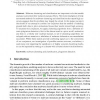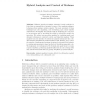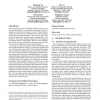3
posts
with
1841
views
1841
views
 Homepage
Homepage 109
click to vote
INFOCOM
2011
IEEE
14 years 4 months ago
2011
IEEE
—Given the flexibility that software-based operation provides, it is unreasonable to expect that new malware will demonstrate a fixed behavior over time. Instead, malware can d...
125
Voted
TDSC
2010
14 years 7 months ago
2010
Although recent estimates are speaking of 200,000 different viruses, worms, and Trojan horses, the majority of them are variants of previously existing malware. As these variants m...
106
Voted
CORR
2010
Springer
14 years 7 months ago
2010
Springer
Malicious mobile phone worms spread between devices via short-range Bluetooth contacts, similar to the propagation of human and other biological viruses. Recent work has employed m...
120
Voted
ACSAC
2010
IEEE
14 years 10 months ago
2010
IEEE
Conficker [26] is the most recent widespread, well-known worm/bot. According to several reports [16, 28], it has infected about 7 million to 15 million hosts and the victims are s...
104
Voted
VIROLOGY
2010
14 years 11 months ago
2010
We propose a general, formal definition of the concept of malware (malicious software) as a single sentence in the language of a certain modal logic. Our definition al thanks to it...
104
click to vote
RAID
2010
Springer
14 years 11 months ago
2010
Springer
Malware clustering and classification are important tools that enable analysts to prioritize their malware analysis efforts. The recent emergence of fully automated methods for ma...
124
Voted
RAID
2010
Springer
14 years 11 months ago
2010
Springer
Abstract. Malware attacks necessitate extensive forensic analysis efforts that are manual-labor intensive because of the analysis-resistance techniques that malware authors employ....
102
Voted
RAID
2010
Springer
14 years 11 months ago
2010
Springer
Malicious software includes functionality designed to block discovery or analysis by defensive utilities. To prevent correct attribution of undesirable behaviors to the malware, it...
99
Voted
KDD
2010
ACM
14 years 11 months ago
2010
ACM
Malware categorization is an important problem in malware analysis and has attracted a lot of attention of computer security researchers and anti-malware industry recently. Today�...

